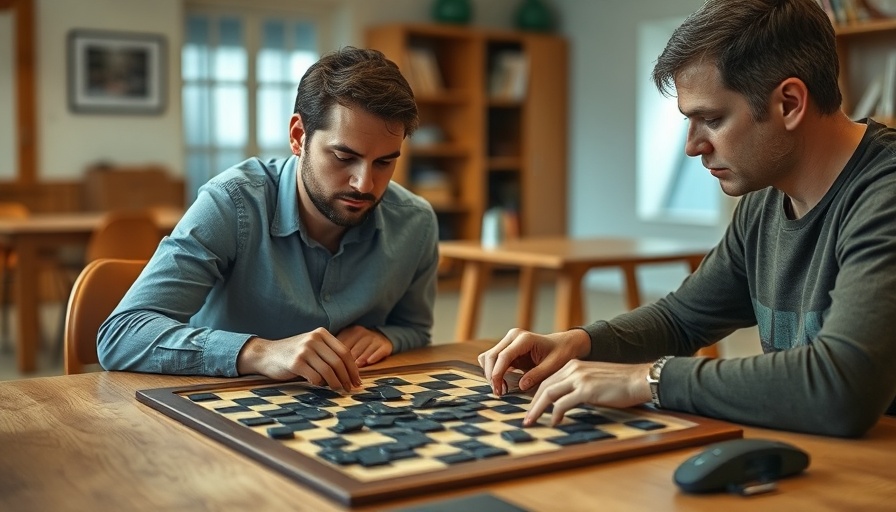
Transforming Math Through Play: A Game-Changer for Education
Engaging students in mathematics has long posed a challenge for educators. The traditional methods, often rigid and uninspiring, fail to capture the interest of young learners. However, recent initiatives at Lučko Elementary School in Croatia illustrate how integrating play into mathematics lessons can spark enthusiasm and promote deeper understanding. This innovative approach is not just about making learning fun; it’s reshaping the educational landscape by emphasizing gamification as an effective instructional strategy.
What's at Stake? Reimagining Learning Environments
Globally, educators are seeking ways to enhance student engagement and performance in mathematics. With the rise of technology and digital tools, the landscape of learning is rapidly transforming. The experiences of fifth and seventh graders at Lučko may provide valuable insight into how schools can revamp their curricula. The "Fun Mathematics" project not only introduces classic games like Domino and Sudoku but also explores the historical significance of these tools. By connecting mathematical theory with hands-on activities, educators can foster a more relatable and interactive learning environment.
Learning Through Historical Context: The Power of Game-Based Learning
Understanding the history of mathematical games such as Nim and Tangram enhances their appeal. These games, rich with tradition, encourage students to interact with numerical concepts in a playful manner. By framing lessons around historical narratives, educators can cultivate curiosity and appreciation for math’s evolution over time. This approach enriches students’ learning experiences by contextualizing numbers within cultural stories, making them more memorable and meaningful.
The Role of Creativity in Mathematical Engagement
Mathematics doesn’t have to be confined to textbooks and lectures. At Lučko Elementary, students also delve into artistic endeavors by creating Christmas stars and fractal drawings. Such activities provide a creative outlet while reinforcing geometric principles. This blend of art with math promotes a holistic educational experience, highlighting the interconnectedness of different fields.
Building Soft Skills Through Collaborative Learning
Games inherently promote teamwork, communication, and problem-solving skills essential in today’s world. The collaborative nature of playing games allows students to learn from one another, developing mutual respect and tolerance. This collaborative framework aligns with contemporary educational philosophies emphasizing social-emotional learning alongside academic achievements.
Looking Forward: The Future of Math Education
As we move forward, it’s clear that ongoing innovation in teaching methods will be critical. The success seen at Lučko Elementary is a clear indication that when educators embrace gamification and playful learning, students are not only more engaged but also more successful. These strategies serve to prepare them for a competitive global landscape where creativity and teamwork are paramount.
Actionable Insights for Educators
Educators, curriculum developers, and parents should advocate for incorporating game-based elements in mathematics instruction. Here are some steps to consider:
- Incorporate historical and cultural contexts into lessons to enhance engagement.
- Encourage creativity through art projects that relate to math concepts.
- Foster collaboration among students by designing team-based learning activities.
- Use digital platforms and apps that gamify learning processes.
- Regularly solicit student feedback to continuously improve the learning experience.
As the educational community continues to collaborate and innovate, embracing play in mathematics education will not only energize classrooms but also prepare students for success in a rapidly evolving world. By rethinking traditional teaching methods through the lens of gamification, we can inspire a new generation of learners who view mathematics not just as a subject, but as a vital tool for understanding the world around them.
 Add Row
Add Row  Add
Add 




 Add Row
Add Row  Add
Add 

Write A Comment